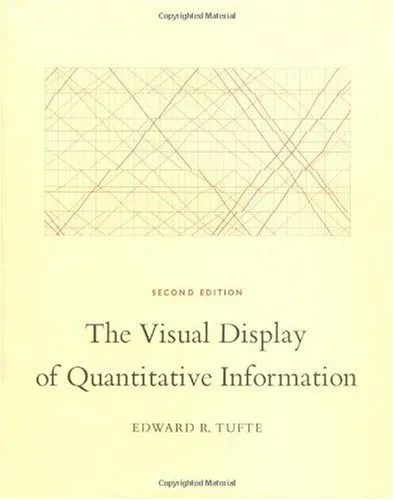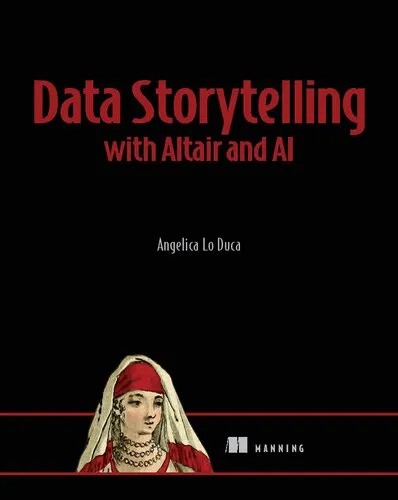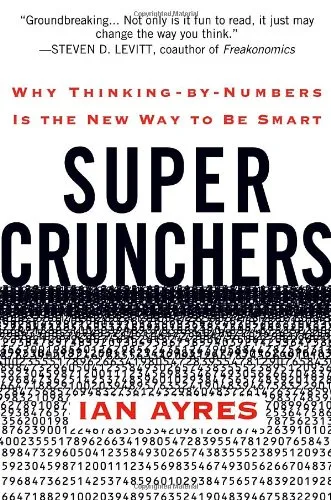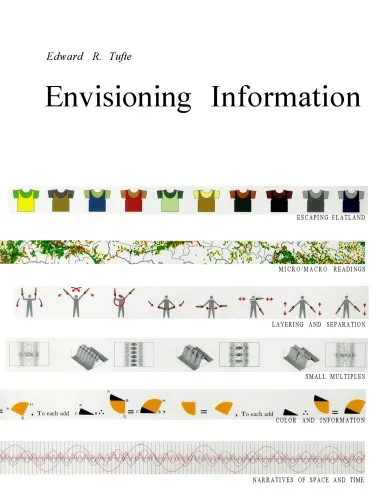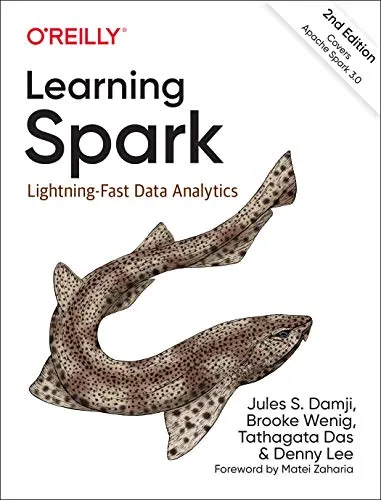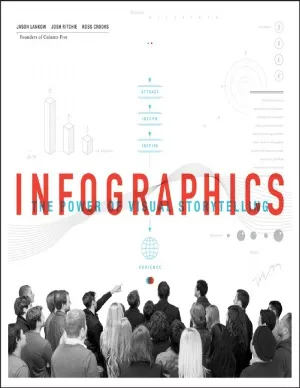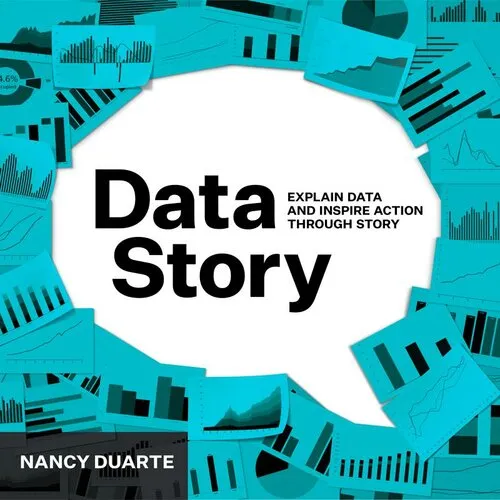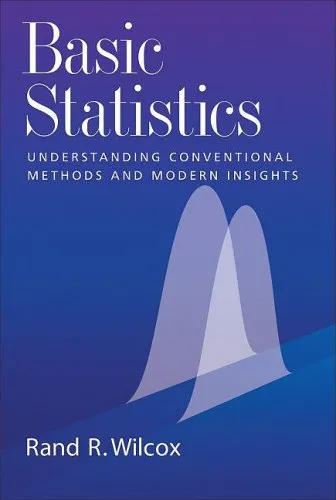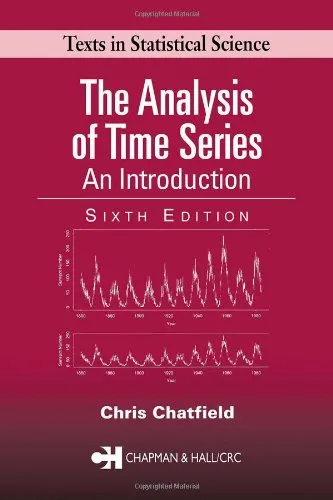The Visual Display of Quantitative Information
4.5
بر اساس نظر کاربران

شما میتونید سوالاتتون در باره کتاب رو از هوش مصنوعیش بعد از ورود بپرسید
هر دانلود یا پرسش از هوش مصنوعی 2 امتیاز لازم دارد، برای بدست آوردن امتیاز رایگان، به صفحه ی راهنمای امتیازات سر بزنید و یک سری کار ارزشمند انجام بدینRelated Refrences:
معرفی کتاب
کتاب "The Visual Display of Quantitative Information" نوشته ادوارد آر. توفتی، یکی از برجستهترین آثار در زمینه نمایش دادههای کمی به صورت بصری است. این کتاب اصول و روشهای موثر برای نمایش اطلاعات پیچیده به گونهای که به شدت بر روی درک بصری مخاطبان تاثیر بگذارد، را بررسی میکند.
خلاصه دقیق کتاب
این کتاب به تفصیل توضیح میدهد که چگونه دادهها را به صورت گرافیکی نمایش داده و اطلاعات را به نحوی منظم و موثر انتقال دهیم. اصول توفتی برای طراحی گرافیکهای اطلاعات، شامل منابع تاریخی و مدرن برای نمودار و طراحی، نقشهها، و تصاویر سهبعدی است. موضوعات شامل نحوه کاهش "chartjunk" یا افراطهای بیمورد و شکل دادن ابزاری است که به کمک آنها مخاطبان میتوانند بصری، دادههای پیچیده را درک کنند.
نتیجهگیریهای کلیدی
- استفاده از نمایش بصری برای بهبود درک اطلاعات پیچیده حیاتی است.
- سادگی و کمینهگرایی میتواند در رساندن پیام مؤثرتر عمل کند.
- فهم و عملکرد کاربر باید در مرکز توجه طراحی اطلاعرسانی باشد.
- از طراحیهای بصری که باعث گیج شدن مخاطب میشوند، اجتناب کنید.
نقل قولهای معروف از کتاب
توفتی میگوید: "اگر اطلاعات ترکیبشده در یک نمایش بصری قابل درک نباشد، چرا زحمت نمایش آن را میکشید؟"
او همچنین تاکید میکند: "هدف باید انتقال اطلاعات با حداکثر وضوح و کمترین میزان حواسپرتی باشد."
چرا این کتاب اهمیت دارد
این کتاب یکی از مهمترین آثار در حوزه نمایش بصری اطلاعات است و تأثیر عمیقی بر طراحان، هنرمندان و دادهنگاران داشته است. توفتی با ارائه اصولی محکم و واضح، راهنماییهایی ارائه میدهد که میتواند به هر کسی که با دادهها کار میکند، کمک کند تا اطلاعاتش را به شکل بصری قدرتمندتری ارائه دهد. با توجه به رشد روزافزون دادهها و نیاز به تحلیل آنها، داشتن توانایی درک و نمایش مؤثر آنها یک مهارت ضروری است که این کتاب به خوبی به آن میپردازد.
The Visual Display of Quantitative Information
Edward R. Tufte's seminal work, 'The Visual Display of Quantitative Information', stands as a pivotal contribution to the fields of data visualization and information design. Known for its authoritative voice and meticulous approach, this book offers a comprehensive exploration of the art and science of presenting quantitative data clearly and effectively.
Detailed Summary of the Book
This book explores the principles and practices of data visualization, guided by the foundational aspects of graphical integrity and excellence. Tufte argues that visual displays should communicate complex information with clarity and precision. Starting with a historical context, the book traces the development of data visualization from the 18th century to contemporary practices, showcasing examples of both exemplary and flawed visualizations.
It delves into the intricacies of constructing high-quality graphics, emphasizing the importance of accuracy, simplicity, and efficiency. Tufte stresses that graphics should not only be aesthetically pleasing but also serve as efficient tools for reasoning about quantitative data. The narrative is punctuated by numerous examples and case studies, demonstrating how effective design can transform raw data into persuasive and convincing visual evidence.
Key Takeaways
- Graphical Excellence: Tufte outlines that the goal of graphic excellence is to present complex ideas with clarity, precision, and efficiency.
- Data-Ink Ratio: He introduces the principle of maximizing the data-ink ratio, focusing on the non-erasable core of the graphic that represents the data itself.
- Simplicity and Clarity: The book reinforces the idea that simplicity is not synonymous with being simplistic. Rather, it is about stripping away non-essential elements to highlight key data insights.
- Integrity in Graphics: Visual representations should not distort the underlying data. Tufte champions honesty and integrity in the depiction of quantitative information.
Famous Quotes from the Book
"Graphical excellence is the well-designed presentation of interesting data – a matter of substance, of statistics, and of design."
"Above all else show the data."
"Avoid distorting what the data have to say."
Why This Book Matters
The significance of 'The Visual Display of Quantitative Information' lies in its visionary foresight and timeless wisdom. Tufte's work laid the foundation for modern data visualization practices, influencing generations of designers, analysts, and scholars. It serves as an essential guide for anyone involved in the presentation of data, urging practitioners to adhere to the principles of honesty, clarity, and efficiency.
The book holds particular relevance today, amidst the explosion of data and the proliferation of visual content. With the increasing complexity of information, Tufte’s teachings provide invaluable guidance on how to navigate the challenges of presenting data in a way that is both accurate and engaging.
In short, Tufte's work champions the transformative power of effective data visualization, positing that well-crafted visuals not only elucidate data but also inspire better decision-making and deeper understanding.
دانلود رایگان مستقیم
شما میتونید سوالاتتون در باره کتاب رو از هوش مصنوعیش بعد از ورود بپرسید
دسترسی به کتابها از طریق پلتفرمهای قانونی و کتابخانههای عمومی نه تنها از حقوق نویسندگان و ناشران حمایت میکند، بلکه به پایداری فرهنگ کتابخوانی نیز کمک میرساند. پیش از دانلود، لحظهای به بررسی این گزینهها فکر کنید.
این کتاب رو در پلتفرم های دیگه ببینید
WorldCat به شما کمک میکنه تا کتاب ها رو در کتابخانه های سراسر دنیا پیدا کنید
امتیازها، نظرات تخصصی و صحبت ها درباره کتاب را در Goodreads ببینید
کتابهای کمیاب یا دست دوم را در AbeBooks پیدا کنید و بخرید
1446
بازدید4.5
امتیاز0
نظر98%
رضایتنظرات:
4.5
بر اساس 0 نظر کاربران
Questions & Answers
Ask questions about this book or help others by answering
No questions yet. Be the first to ask!
